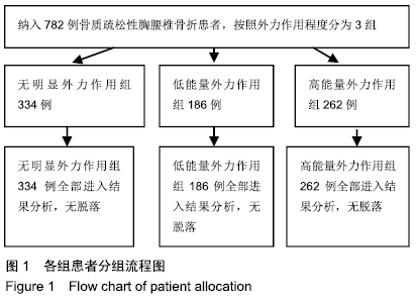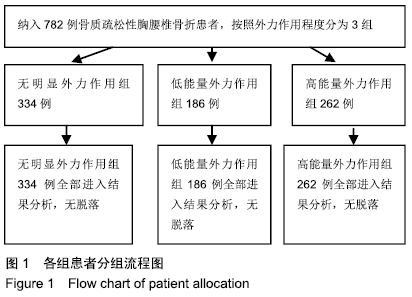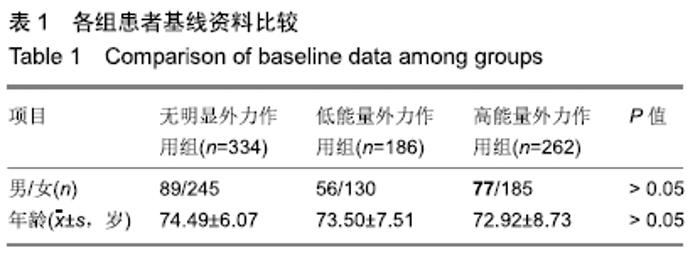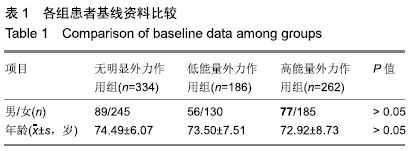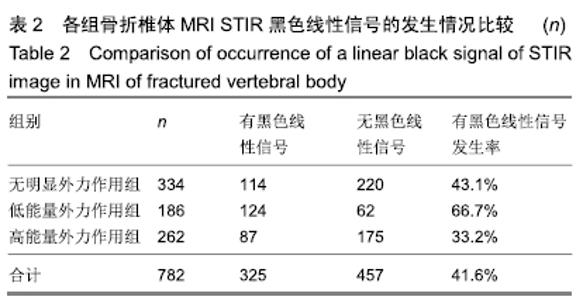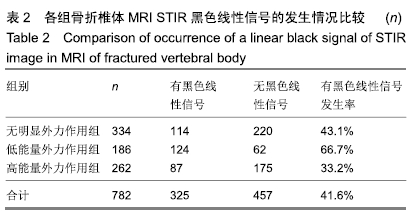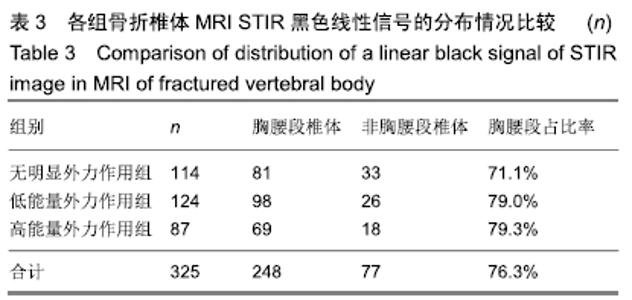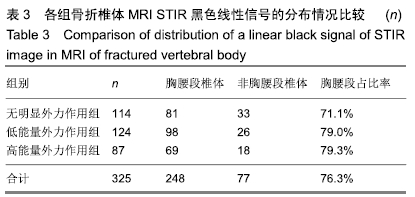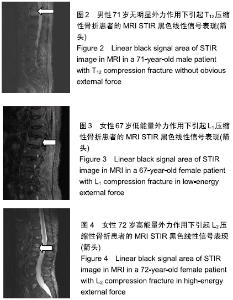Chinese Journal of Tissue Engineering Research ›› 2020, Vol. 24 ›› Issue (9): 1400-1404.doi: 10.3969/j.issn.2095-4344.2512
Previous Articles Next Articles
Relationship between a linear black signal area of STIR image in MRI of osteoporotic thoracolumbar fracture and the size of external force
Zhong Yuanming1, Luo Man2, Tang Fubo1, Tang Cheng3
- 1The First Affiliated Hospital of Guangxi University of Chinese Medicine, Nanning 530001, Guangxi Zhuang Autonomous Region, China; 2Guangxi International Zhuang Medical Hospital, Nanning 530001, Guangxi Zhuang Autonomous Region, China; 3Liuzhou Traditional Chinese Medicine Hospital, Liuzhou 545001, Guangxi Zhuang Autonomous Region, China
